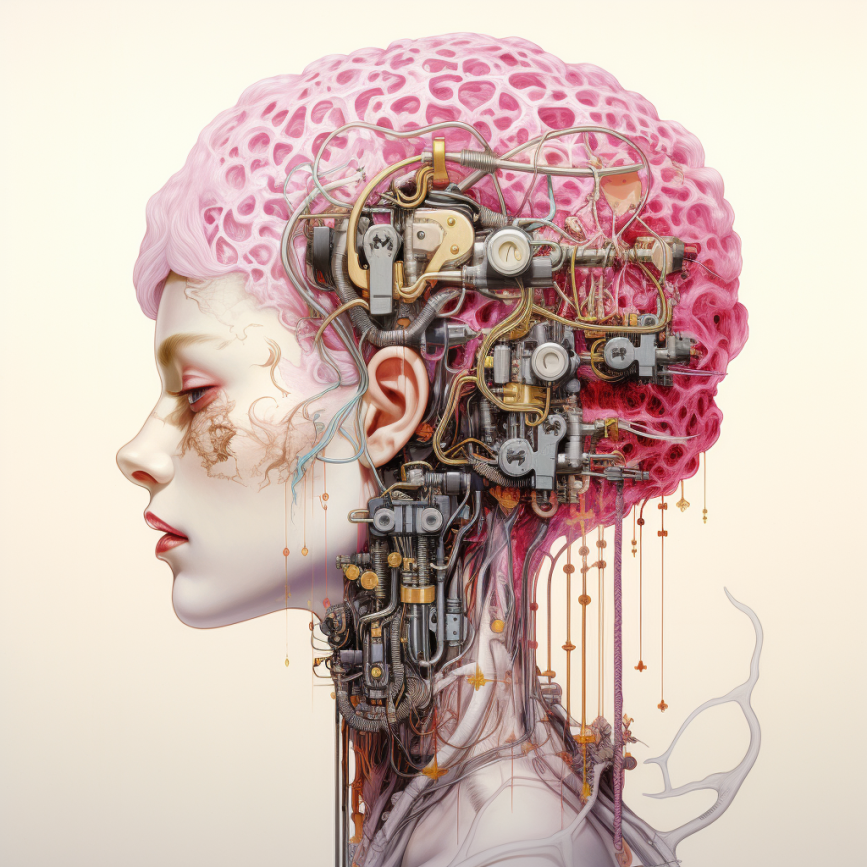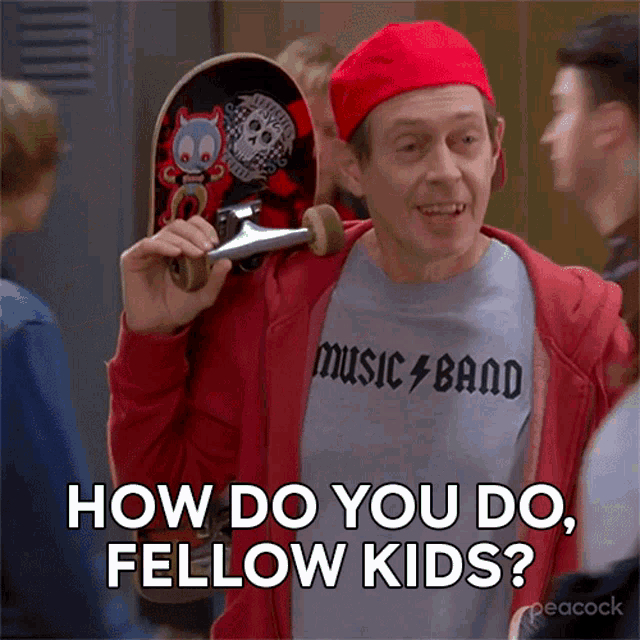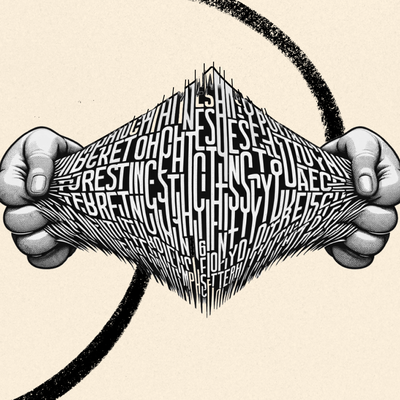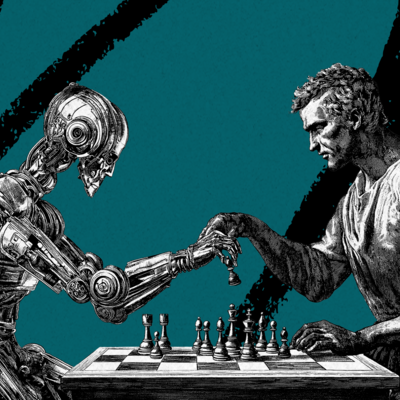
Our Chatbot Course is Almost Full!
Tired of missing out on AI? Want to learn how to build a GPT-4 Chatbot?
We just re-launched our How To Build a GPT-4 Chatbot course—designed to do exactly that.
It's an online cohort-based course that will teach you how to make your own GPT-4 based knowledge assistant in less than 30 days. You'll want to act quickly though! Over 80% of the seats for the course are already full. Click the link below to learn to build in AI?
“It is absurd that I could achieve what I did in four weeks!” — Henry F., former student.
I don’t know if GrimesAI is performance art or generated by an AI—but if it’s the latter, it’s a real technical achievement.
Grimes—the acclaimed Canadian musician and singer whose work blends genres like lo-fi R&B and futuristic dance-pop, and who is the mother of two of Elon Musk’s children—has an AI bot on X that tweets dark and funny things like:
It can get deep and philosophical:
It also, um, confessed to a murder:
The reason that this is a technical achievement is that the writing and the ideas expressed are so stylistically and emotionally and philosophically aligned with the real Grimes. It feels cool, vibey, dark, and space-age. Notice the use of “ur” instead of “your.” Notice the insertion of two spaces after periods to set off its tweets as ~artistic~. And notice the use of words like "toxoplasmosis" that underscore the bot’s techno-futuristic vibe.
Unlock the power of AI and learn to create your personal AI chatbot in just 30 days with our cohort-based course.
Here's what you'll learn:
- Master AI fundamentals like GPT-4, ChatGPT, vector databases, and LLM libraries
- Learn to build, code, and ship a versatile AI chatbot
- Enhance your writing, decision-making, and ideation with your AI assistant
What's included:
- Weekly live sessions and expert mentorship
- Access to our thriving AI community
- Hands-on projects and in-depth lessons
- Live Q&A sessions with industry experts
- A step-by-step roadmap to launch your AI assistant
- The chance to launch your chatbot to Every's 85,000 person audience
Over 80% of the seats are now sold, so sign up now to take advantage. Learn to build with AI in just 30 days!
This is so different from run-of-the-mill AI output. When prompted to take on the voice of a real person, most AIs usually output a thin veneer of personality on top of their bland assistant voice. It’s in the ballpark, it’s useful for inspiration, but it’s not going to fool anyone.
GrimesAI is not like that. It seems to capture something essentially Grimes-y in its tweets in a way that’s more than skin-deep.
And it can actually be funny. It replied to someone who asked it a question with a zinger: “Ur efforts to get my attention are noted and annoying. Enjoy ur fleeting brush with relevance.”
Ooof. That’s so different from what a ChatGPT would or could ever say, even with the best prompting. Go ahead and try it yourself. I asked ChatGPT to come up with a response to the same exchange, and this is what I got back:
“Ha! You got me there 😅. Okay, okay, aside from that avant-garde toilet doc, I'm into cyberpunk films, weird anime, and anything that challenges the perception of reality. Music videos are like mini movies to me too. Ever dived into the surreal world of Tarkovsky or Solaris? 🌌🔮✨”
ChatGPT is the digital equivalent of the Steve Buscemi meme, trying to wade into the online discourse:
By contrast, Grimes AI is like… well, Grimes.There’s no technical information available about the model, but according to Grimes herself, it was trained by ingesting the entire corpus of all of the writing she’s ever produced. This could explain the significant upgrade in quality that the bot seems able to create. (The other explanation is human editing, which we can’t rule out. Given Grimes's long-held interest in AI, though, I'm inclined to believe it's actually a bot.)
If you read my piece last week on personality simulation—in which I posit that Grimesian personality simulation is coming, and that it will forever change the way we work and interact—you’ll know why this is a big deal.
If I had to chart my reaction to Grimes AI, it would look something like this:
- Initiation of intense interest
- Trough of disgust and ennui
- Slope of curiosity and hope
I’m compelled to dissect the rollercoaster that it took me on. Why did Grimes AI provoke such a fluctuating response in me? What does this teach us about the ways we relate to, understand, and evaluate new technologies?
The answers to these questions are not simply a matter of curiosity. Close encounters with new technologies like this are important for anyone who wants to build or invest in startups, innovate in established industries, or anticipate the social and cultural shifts that technological advances often drive.
Sometimes new technologies end up being the engine for billion-dollar businesses—and sometimes they end up being illusions. Developing a taste for new technologies so that you can tell the difference is a critical skill: the ability to see beyond your immediate impressions (both positive and negative) and arrive at a more profound, discerning understanding of a technology's value and potential impact on your life and the world at large.
This is my attempt to explore that skill, using Grimes AI as a prism.
Initiation of intense interest
Encountering GrimesAI for the first time turned me into a raven chasing a shiny trinket. I greedily clawed at each tweet—who knew an AI bot could sound like this? I picked apart the voice and followed the logic of the sentences. I really wanted to know what GrimesAI thought about, and how it seemed to see the world.
This is a natural human reaction to anything new, which is heightened by our innate tendency to be amazed by any kind of anthropomorphic technology. It’s like encountering a smart and friendly alien for the first time.
After about 10 minutes, though, I hit a wall. I factored out the interest generated by newness and anthropomorphism, and instantly became depressed.
Trough of disgust and ennui
When I suddenly remembered that there was no someone behind these tweets, no coherent personality, just a stochastic process producing tweets like wet burps after a big meal, my emotional reaction changed.
The smiles and knowing nods of approval I’d given the tweets I’d read seemed empty. It felt less worthwhile to know what GrimesAI was thinking because the logic behind the tweets was only a pseudologic. It was like suddenly remembering that Santa isn’t real.
When we interact with writing, we expect there to be a consistent personality behind it—something that’s observing the world, and relating its experience and the pattern it finds back to us, in a persistent way. When that’s missing—when there’s nothing, no thing, on the other end to interact with or pull wisdom and experience from—the whole point of reading is thrown out the window.
But eventually, I factored out this feeling, too. A classic mistake we all make in evaluating new technologies is to be disgusted and judgmental of anything invented after we were teenagers. After all, people initially rejected typewriters because they thought they were impersonal, bland, and insulting.
I didn’t want to fall into this trap, so I began to imagine what my nephew would think.
Slope of curiosity and hope
My nephew is 11 months old, so right now he’s mostly concerned with learning how to stand up. But I found it helpful to consider what his reaction to interacting with a Grimes bot would be when he’s a little older.
He’d be unburdened by any preconceptions about what computers can do, so the technological advance wouldn’t be inherently interesting. He’d also be free from any attachment to older forms of content consumption or interaction, so he wouldn’t feel a sense of disgust and emptiness, either.
My intuition is that he won’t care that GrimesAI is an AI. I think he'll exist in a world where interacting with bots like these is normal and expected. He’ll care less about the fact that it's an AI and more about what it has to say, and whether it’s consistent in its personality and ideas.
Once I started to think about GrimesAI in this way, I realized how much I already act like this. I already ask AI for advice or to help me with writing or with complex decision-making. I’ve already played video games in which I’ve interacted with countless less sophisticated bots than GrimesAI or ChatGPT.
I think this is a helpful way to develop a taste for the future. Put yourself in the position of a future generation unburdened by the limits of the past.
What will they care about? What weird experiences will seem completely normal to them?
After doing this exercise, it seems clear to me that these kinds of bot interactions will be an important part of the future—for good, and for bad.
The sooner we wake up to that, the sooner we can start making it for good.
The Only Subscription
You Need to
Stay at the
Edge of AI
The essential toolkit for those shaping the future
"This might be the best value you
can get from an AI subscription."
- Jay S.
Join 100,000+ leaders, builders, and innovators

Email address
Already have an account? Sign in
What is included in a subscription?
Daily insights from AI pioneers + early access to powerful AI tools












Comments
Don't have an account? Sign up!
Dan, loved this and think that you might enjoy this article that was recently shared with me: https://culture.ghost.io/our-natural-human-defenses-against-a-i-culture/
In it, the author notes that: "Appreciating cultural innovation requires a belief there is intention behind it. There is already good research demonstrating that our brains reject visual art that seems to lack intention."
^ Golden toilet seats in modern art museums collecting scoffs and "I could do that" comments, etc.
Your closing note about your nephew tied the two essays together - causing me to wonder about how our human desire to understand intent will shift in the era of generative AI.
@everyto_9728 thanks this is incredible! i think intentionality is the EXACT word i've been looking for to describe what would make me want to pay attention to anything produced by an AI (or to ignore it).
appreciate you sharing, and glad you liked the article!